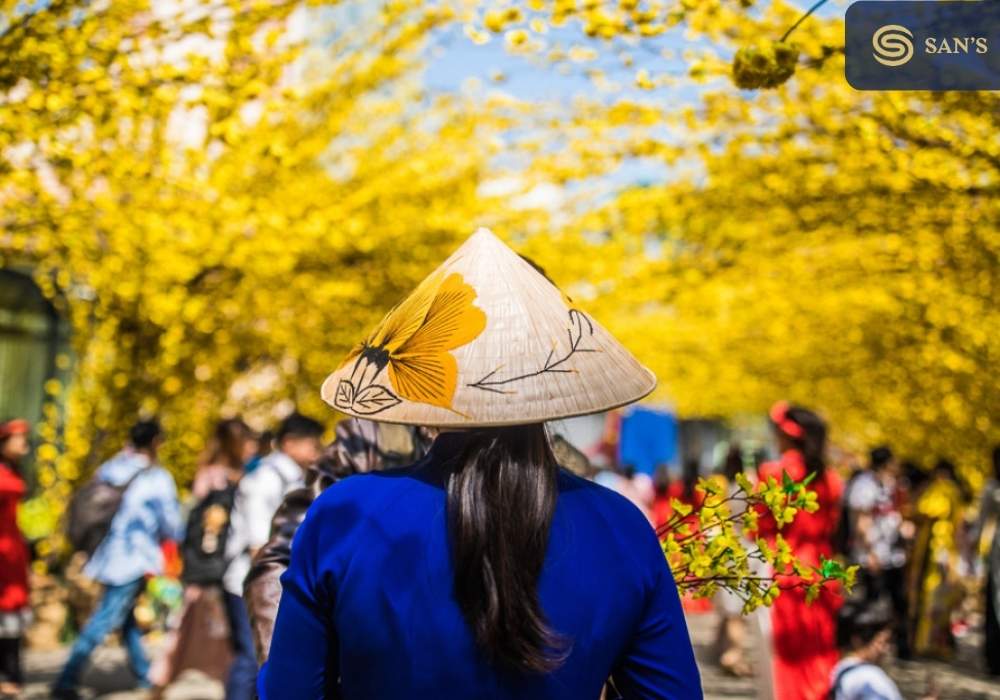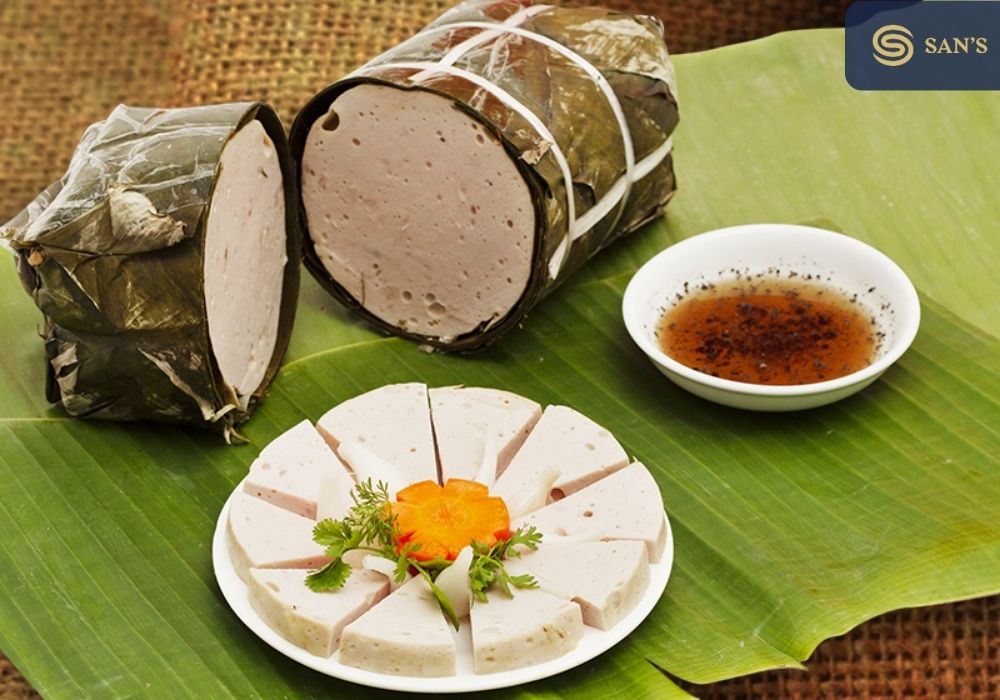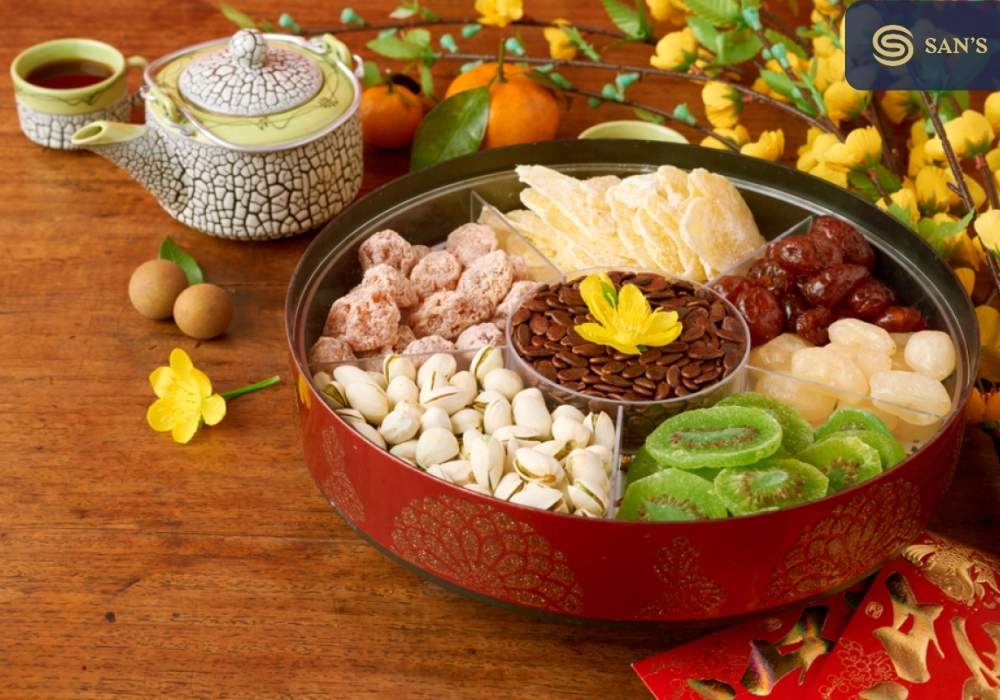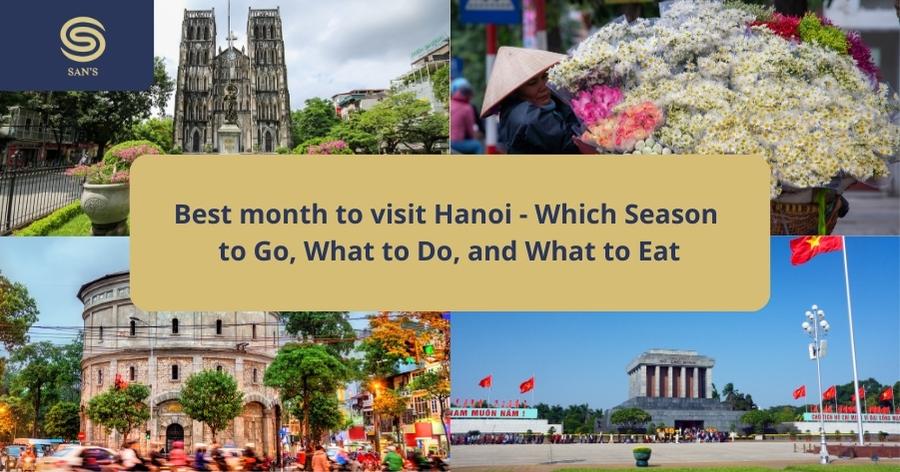Vietnamese Tet, or the Lunar New Year, is an occasion of immense cultural and historical significance in Vietnam, marking the arrival of spring based on the lunar calendar. It is a time of renewal, family reunions, and, importantly, a celebration of traditional values and customs. Central to these celebrations is the Vietnamese Tet food, which is much more than just a means of sustenance.

These dishes are steeped in tradition and are symbolic of various aspects of life, such as prosperity, health, and longevity. During Tet, families come together to prepare and share a feast of special foods, each carrying its own story and significance.
The importance of Vietnamese Tet food in the celebrations goes beyond mere taste; it is a medium through which history, culture, and familial love are expressed and passed down through generations. As such, understanding these foods gives us a deeper appreciation of the Tet festival and its vital role in Vietnamese culture.
The Essence of Vietnamese Tet Food
Vietnamese Tet food uniquely stands out from the country’s everyday cuisine, embodying the essence of the Lunar New Year’s celebratory spirit. Tet, the most significant festival in Vietnam, brings forth a culinary panorama that is rich in symbolism and steeped in tradition.

Unlike the usual Vietnamese fare, which emphasizes freshness and a balance of flavors, Vietnamese Tet food is more elaborate, often requiring intricate preparation methods and special ingredients. These dishes are not just about taste; they are a mosaic of cultural beliefs, ancestral reverence, and wishes for prosperity in the coming year.
During Tet, food transcends its usual role of nourishment and becomes a central element in family gatherings and traditions. It is a time when families reunite, often traveling long distances to be together. In this context, Vietnamese Tet food acts as a bond, uniting generations around the cooking and sharing of traditional dishes. Preparing and enjoying these foods together is as much about celebrating the new year as it is about reinforcing family ties and honoring ancestors.
The preparation of certain dishes, like Banh Chung (a square sticky rice cake), is in itself a family ritual, with each member often playing a specific role. Thus, Vietnamese Tet food is more than just a feature of the festival; it is the heart and soul of Tet celebrations, embodying the warmth of family, the richness of culture, and the vibrancy of Vietnamese heritage.
Traditional Tet Dishes
Banh Chung and Banh Tet: These are iconic staples of Vietnamese Tet food. Banh Chung is a square-shaped sticky rice cake, symbolizing the Earth, while Banh Tet is its cylindrical counterpart, representing the Moon. Both are made with glutinous rice, mung beans, and pork, wrapped in banana leaves. Their preparation is time-consuming and often a family activity, symbolizing unity.

Thit Kho Tau (Caramelized Pork and Eggs): This is a savory and sweet dish of pork belly and eggs, simmered in coconut juice. It symbolizes wealth and the abundance of a prosperous year ahead. In the context of Vietnamese Tet food, it’s not only a delicious dish but also a representation of familial warmth and the joy of the Lunar New Year.

Gio Lua (Vietnamese Pork Sausage): A fine-textured pork sausage, Gio Lua is a common feature in the Tet feast. It’s known for its delicate flavor and is often enjoyed with sticky rice and pickled onions.

Xoi Gac (Red Sticky Rice): Xoi Gac is a vibrant red-colored sticky rice made with Gac fruit, which imparts a unique flavor and color. The red hue symbolizes luck and prosperity, making it a festive and auspicious dish in Vietnamese Tet food.

>>> How to make Vietnamese Sticky Rice
Dua Hanh (Pickled Onions): These are a must-have side dish during Tet. The tangy and slightly sweet pickled onions are believed to cleanse the palate and aid in digestion. They perfectly complement the rich and savory flavors of other Vietnamese Tet food items.

Mut (Candied Fruits): This sweet delicacy is an indispensable part of Vietnamese Tet food. Made from dried fruits and seeds coated in sugar, Mut is not just a treat for the taste buds but also a symbol of a sweet and joyful life in the new year.

Each of these dishes plays a vital role in the Tet celebrations, not just for their flavors but for their cultural and symbolic significances. Together, they form an intricate mosaic of tastes and traditions that are the essence of Vietnamese Tet food. These foods are more than just ingredients and recipes; they are the carriers of history, tradition, and the spirit of a nation, making Tet a truly remarkable time in Vietnam.
Regional Variations in Tet Cuisine
The celebration of Tet, the Vietnamese Lunar New Year, showcases an array of Vietnamese Tet food that varies significantly across the different regions of the country. The diversity in Tet cuisine is a reflection of Vietnam’s geographical variations and the rich tapestry of local customs and traditions.
- Northern Vietnamese Tet Specialties: In the colder climate of the North, Tet dishes are often heartier. A notable dish is Banh Chung, which is more prevalent here than in other regions. Northern cuisine during Tet also features dishes like Gio Thu (a head cheese made with pork head meat and skin) and Thit Dong (jellied meat). These foods, rich and substantial, reflect the need for more energy-rich foods in the cooler northern climate.
- Central Vietnamese Tet Specialties: The central region, known for its royal culinary heritage, offers Tet foods that are often more elaborate and aesthetically pleasing. Banh Tet, a variant of Banh Chung, is more popular here. Dishes like Nem Chua (fermented pork roll) and Canh Bun (rice vermicelli soup) are also significant. The use of spices and the presentation in Central Vietnamese Tet food are influenced by the region’s history as the seat of the Nguyen Dynasty.
- Southern Vietnamese Tet Specialties: The warm and fertile South, with its abundance of fresh produce, contributes to a Tet menu that is vibrant and diverse. The Southern variation of Banh Tet often includes fillings like mung bean and pork fat, making it distinct from its Northern and Central counterparts. Sweet flavors are more prominent in the South, with dishes like Thit Kho Tau (caramelized pork and eggs) and an array of Mut (candied fruits) being favorites.
Modern Twists on Traditional Tet Foods
In recent years, Vietnamese Tet food has experienced a fascinating evolution, embracing fusion dishes and contemporary adaptations while still respecting the traditions. This blending of old and new reflects the dynamic nature of Vietnamese cuisine and its responsiveness to global trends.
- Fusion Dishes: Chefs and home cooks alike are experimenting with traditional recipes by infusing them with flavors and techniques from other cuisines. For instance, the classic Banh Chung has seen variations where traditional fillings are replaced with ingredients like salmon or truffle oil, offering a luxurious twist to the traditional taste. Such innovations in Vietnamese Tet food not only cater to the evolving palate but also to the Vietnamese diaspora, who blend their heritage with the influences of their adopted cultures.
- Contemporary Adaptations: Modern lifestyle changes have also led to adaptations in Vietnamese Tet food. Health-conscious trends are influencing the preparation of traditional dishes, with cooks opting for less sugar in Mut (candied fruits) or using leaner cuts of meat in Thit Kho Tau (caramelized pork and eggs). There’s also a growing interest in vegetarian and vegan versions of Tet dishes, accommodating dietary preferences and lifestyles.
- Influence of Global Trends: The rise of social media and food blogging has exposed Vietnamese Tet food to global audiences, sparking interest and experimentation across borders. This exposure has led to a greater appreciation of Vietnamese culinary traditions worldwide and inspired international chefs to try their hand at Tet dishes, often adding their unique spin.
These modern twists on traditional Vietnamese Tet food not only keep the cuisine fresh and exciting but also ensure its relevance in a rapidly changing world.
FAQs regarding Vietnamese Tet food
- What is Vietnamese Tet?
- Tet is the Vietnamese Lunar New Year, the most important holiday in Vietnam. It’s a time of family reunions, traditions, and celebration, marking the start of the lunar calendar year.
- Why is food important during Tet?
- Food plays a central role in Tet celebrations. It is not only about enjoying delicious meals but also about preserving tradition, honoring ancestors, and bringing luck and prosperity for the new year.
- What are some traditional Vietnamese Tet foods?
- Traditional dishes include Banh Chung (sticky rice cake), Thit Kho Tau (caramelized pork and eggs), Gio Lua (Vietnamese pork sausage), and Mut (candied fruits). Each dish has its own symbolic meaning and is essential to the Tet feast.
- How do Tet food traditions vary across Vietnam?
- Tet food varies significantly between the Northern, Central, and Southern regions of Vietnam, reflecting the local ingredients, climate, and cultural influences.
- Can I find vegetarian or vegan options for Vietnamese Tet food?
- Yes, there are vegetarian and vegan versions of traditional Tet dishes, adapting to dietary preferences while keeping the spirit of the festival.
- Are there modern twists to traditional Tet foods?
- Modern adaptations and fusion dishes have become increasingly popular, incorporating global culinary trends while maintaining the essence of traditional Tet flavors.
- How can I experience authentic Vietnamese Tet food if I’m not in Vietnam?
- Many Vietnamese restaurants around the world offer special Tet menus during the festival. You can also try cooking traditional Tet dishes at home using available recipes and ingredients.
- Is it difficult to prepare Vietnamese Tet food?
- Some traditional Tet dishes require time and effort to prepare, but there are also simpler recipes available. Cooking Tet food can be a fun and rewarding experience, especially when done with family or friends.
- What is the significance of Banh Chung and Banh Tet?
- Banh Chung and Banh Tet are symbolic of the earth and the heavens. They are traditional rice cakes made during Tet and represent gratitude to ancestors and the earth.
- Can I learn to make traditional Vietnamese Tet food?
- Absolutely! There are many resources online, including recipes and cooking videos, that can guide you through the process of making traditional Vietnamese Tet food.





